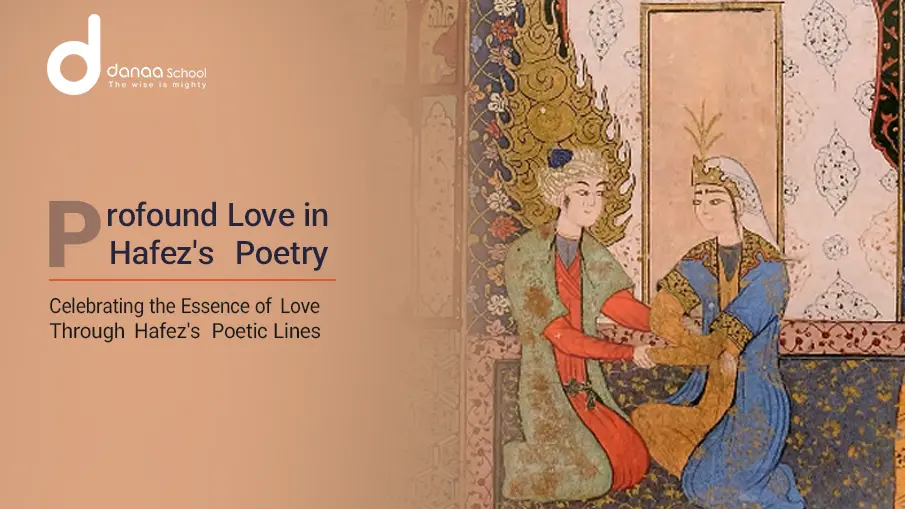Hafez, a cornerstone of Persian literature, was born on October 12, 1315, in Shiraz, Persia. Known as Shams-ud-Din Muhammad Hafez-e Shirazi, his birth marked the beginning of a life that would leave an indelible mark on poetry and culture. Hafez’s name, meaning “memorizer” or “keeper,” reflects his mastery of the Quran, a testament to his early scholarly pursuits. When was Hafez born?
When Was Hafez Born?
Hafez’s upbringing in Shiraz—a city renowned for its intellectual vibrancy—provided a fertile ground for his development as a poet. His education began with a deep immersion in religious texts, particularly the Quran, which he memorized, earning him the title “Hafez.” This early exposure to religious studies was complemented by his exploration of Persian and Arabic literature, which enriched his poetic voice.
Despite his religious background, Hafez’s poetry diverged from traditional religious themes, embracing a more mystical and introspective approach. His ability to weave together religious, secular, and mystical elements set him apart from his contemporaries and laid the foundation for his unique poetic style.
Hafez’s Literary Contributions
Hafez’s poetry predominantly consists of ghazals, a poetic form that delves into themes of love, mysticism, and the divine. His ghazals are celebrated for their lyrical beauty and complex imagery, blending the spiritual with the earthly in ways that resonate deeply with readers.
Unlike many poets of his time, Hafez’s work does not conform strictly to religious or moralistic teachings. Instead, his poetry often challenges conventional religious norms, offering a more personal and spiritual perspective on the pursuit of divine love and human passion.
His Divan, a compilation of his poems, remains a seminal work in Persian literature. This collection has been translated into numerous languages, allowing Hafez’s profound insights to reach a global audience and influence literary traditions far beyond Persia.
Themes and Style in Hafez’s Poetry
Hafez’s poetry is characterized by its use of vivid metaphors and allegory, creating a rich tapestry of meanings that extend beyond the literal. His exploration of love—both earthly and divine—forms the core of his work, often reflecting a deep yearning for union with the divine.
Common themes in Hafez’s poetry include:
– Love: Both the joys and sorrows of love are central to his ghazals, often symbolizing the soul’s longing for divine connection.
– Wine: Frequently appearing as a metaphor for divine ecstasy or spiritual enlightenment.
– Mysticism: A recurring theme that explores the soul’s journey towards understanding and experiencing the divine.
– Nature: Used to symbolize various spiritual states and experiences, from the transient beauty of flowers to the eternal flow of rivers.
His style is marked by a profound musicality and rhythm, making his poetry not only a pleasure to read but also to recite. This musicality, coupled with his deep philosophical insights, has made Hafez’s poetry an enduring favorite among readers of all ages.
Hafez’s Enduring Influence
Hafez’s impact on literature and culture is profound and enduring. His works have transcended time and geography, influencing not just Persian literature but also Western literary traditions. His verses continue to be recited in cultural and religious ceremonies in Iran, reflecting his lasting significance in Persian culture.
The tomb of Hafez in Shiraz, known as Hafezieh, is a pilgrimage site for lovers of his poetry. Visitors from around the world come to pay their respects, reflecting the universal appeal of his work. His influence is also evident in the works of many Western poets and writers who have drawn inspiration from his profound insights into love, spirituality, and human existence.
FAQs
What is Hafez best known for?
Hafez is best known for his ghazals—lyrical poems that explore themes of love, mysticism, and the divine. His ability to blend the sacred and secular in his poetry has made his work timeless and widely celebrated.
Why is Hafez's poetry significant?
Hafez’s poetry is significant for its profound spiritual insights and lyrical beauty. His use of metaphors and allegory creates a rich tapestry of meanings, making his work accessible to a broad audience and allowing it to transcend cultural boundaries.
Where was Hafez born?
Hafez was born in Shiraz, Persia, on October 12, 1315. Shiraz’s vibrant cultural and intellectual environment played a crucial role in shaping his poetic voice.
How has Hafez influenced modern literature?
Hafez’s influence on modern literature is evident in his impact on both Eastern and Western literary traditions. His exploration of themes like love and mysticism has inspired countless poets and writers, and his works continue to be studied and appreciated worldwide.
How can I learn more about Hafez?
You can learn more about Hafez by exploring his Divan, a collection of his poetry, available in many translations. Visiting cultural sites like his tomb in Shiraz can also provide deeper insights into his life and legacy.
Conclusion
Hafez’s legacy as a poet and scholar is marked by his unique ability to blend the sacred with the secular, the mystical with the tangible. His poetry, rich with metaphor and allegory, continues to resonate with readers, offering timeless insights into the human condition and the quest for divine love.
At Danaa School, we are committed to nurturing a love for literature and cultural heritage in our students. By exploring the works of literary giants like Hafez, we aim to inspire a lifelong passion for learning and personal growth. Join us at Danaa School to provide your child with a comprehensive education that celebrates the richness of our cultural history and fosters intellectual curiosity.
Learn more about our Farsi courses and enroll your child today for a journey of discovery and enlightenment.










